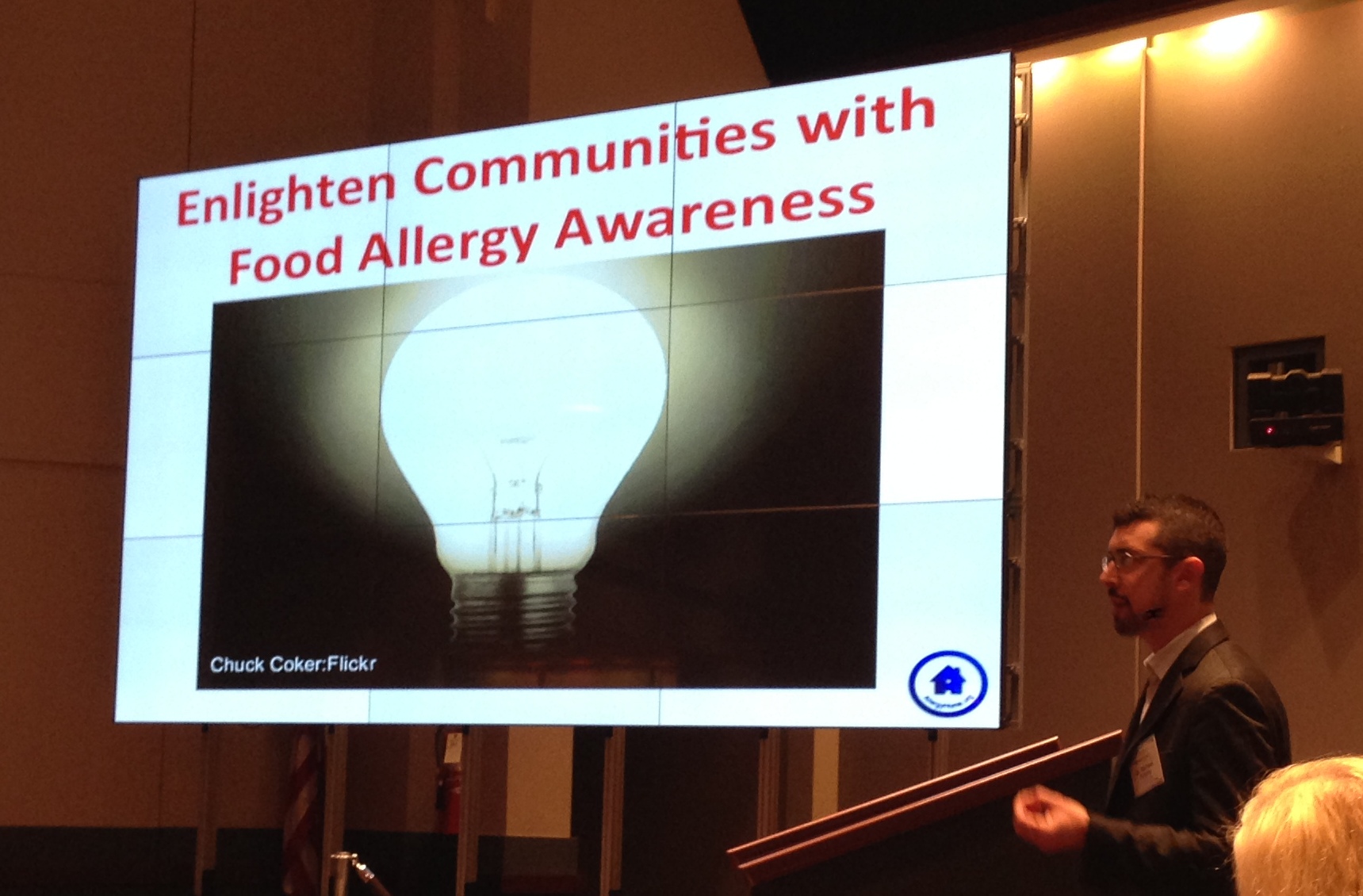Share on Facebook
Written by Michael Pistiner, MD, MMSc
“Effective communication, vigilance, and wise food and restaurant choices are key to ensuring a safe and fun meal”
Going out to eat is an important part of our lifestyle and culture. Some dine out to socialize, some for convenience, and some for the love of food. People with food allergies have the same social and psychological needs as those without, but eating out with food allergies can be challenging. Avoiding restaurants because of food allergy is a major reason for lower quality of life (Cohen et al. Journal of Allergy and Clinical Immunology 2004;114: 1159-63). Studies show a clear need for effective communication and improved food allegy training in eating establishments (Furlong, DeSimone, and Sicherer. Journal of Allergy and Clinical Immunology 2001;108:867-70.)(Ahuja and Sicherer. Annals of Allergy Asthma Immunology. 2007;98:344–348). Customers and restaurants need to partner for safety sake. Effective communication, vigilance, and wise food and restaurant choices are key to ensuring a safe and fun meal.
Communicate clearly: Notify the eating establishment of your child’s food allergy every time you order
 Carefully choose your words to be sure that there is no miscommunication. Make it clear that this is an allergy, not a preference, and clearly state which foods need to be avoided. Talk to a manager and/or the chef, if possible, in addition to your server. Consider using a chef card that has the food allergies clearly written. Ensure that there is an understanding with those handling your meal. Avoid restaurants where there is not a common language.
Carefully choose your words to be sure that there is no miscommunication. Make it clear that this is an allergy, not a preference, and clearly state which foods need to be avoided. Talk to a manager and/or the chef, if possible, in addition to your server. Consider using a chef card that has the food allergies clearly written. Ensure that there is an understanding with those handling your meal. Avoid restaurants where there is not a common language.
Make wise food and restaurant choices based upon the specific food allergies
 Avoid sauces, stews, soups, and other combination dishes as these are common sources of hidden ingredients and potentials for cross contact as many are prepared prior to your arrival. Also avoid fried foods, salad bars and buffets as these are common sources of cross-contact. It is safest to order simple items (e.g grilled chicken, baked potato, etc.) (Muñoz-Furlong, A. Pediatrics 11.3 (2003): 164-1664). Certain restaurants and eating establishments can be less safe for those with certain allergies (for example ice cream shops, bakeries, Asian restaurants use peanuts and tree nuts in many items) Get comfortable with knowing which types of establishments and dishes are safest for your allergy.
Avoid sauces, stews, soups, and other combination dishes as these are common sources of hidden ingredients and potentials for cross contact as many are prepared prior to your arrival. Also avoid fried foods, salad bars and buffets as these are common sources of cross-contact. It is safest to order simple items (e.g grilled chicken, baked potato, etc.) (Muñoz-Furlong, A. Pediatrics 11.3 (2003): 164-1664). Certain restaurants and eating establishments can be less safe for those with certain allergies (for example ice cream shops, bakeries, Asian restaurants use peanuts and tree nuts in many items) Get comfortable with knowing which types of establishments and dishes are safest for your allergy.
Do not share food that was not prepared specifically for the person with food allergies
The same precautions that went into the preparation of their dish may not have been used in yours.
Timing and preparation matter
Try not to visit a restaurant at peak hours. When a restaurant is very busy there will be less time to devote to your order. If possible, call first and discuss the allergy with a manager. It is worth asking if they have a plan in place for dealing with customers with food allergy.
Always carry epinephrine auto-injectors
If you forgot the auto-injectors then go back and get them.
Also can consider bringing safe food for the person with food allergies
Remember to model the behavior that we want our children to learn
If there is any doubt that a meal cannot be safely served/eaten then politely leave
Tips on teaching children: Living Confidently With Food Allergy: Dining Out at Restaurants
AAAAI Video: Food Allergies and Eating Out
Kids With Food Allergies Foundation Webinar: Dining Out With Food Allergies
Customer rated guide for restaurants: AllergyEats
 Michael Pistiner, MD, MMSc is a pediatric allergist for Harvard Vanguard Medical Associates, as well as a voluntary instructor of pediatrics at Boston Children’s Hospital. He is the father of a child with food allergies and serves as a voluntary consultant for the Massachusetts Department of Public Health, School Health Services. He is a fellow in the American Academy of Pediatrics, where he is a member of the Council of School Health and the Section of Allergy & Immunology. He is also a member of the American Academy of Allergy Asthma & Immunology, where he is a member of the Adverse Reaction to Food Committee and Co-Chair of the Food Allergy Awareness in Eating Establishments Subcommittee.
Michael Pistiner, MD, MMSc is a pediatric allergist for Harvard Vanguard Medical Associates, as well as a voluntary instructor of pediatrics at Boston Children’s Hospital. He is the father of a child with food allergies and serves as a voluntary consultant for the Massachusetts Department of Public Health, School Health Services. He is a fellow in the American Academy of Pediatrics, where he is a member of the Council of School Health and the Section of Allergy & Immunology. He is also a member of the American Academy of Allergy Asthma & Immunology, where he is a member of the Adverse Reaction to Food Committee and Co-Chair of the Food Allergy Awareness in Eating Establishments Subcommittee.
He served on a team assembled to implement a law designed to increase food allergy awareness in Massachusetts eating establishments and is chair of the Medical Advisory Team for Kids with Food Allergies Foundation. Additionally, Dr. Pistiner serves on the board of Asthma & Allergy Foundation of America, New England Chapter, and is a member of the National Food Allergy Management and Education Advisory Board. Dr. Pistiner is the author of Everyday Cool with Food Allergies, a co-author of Living Confidently with Food Allergy, and is co-founder and content creator of AllergyHome.org.